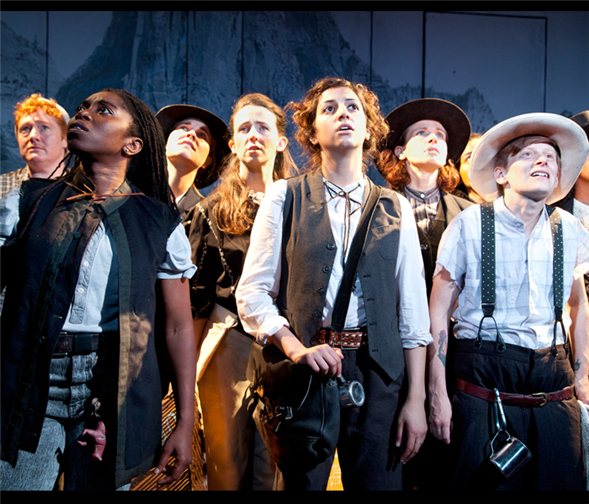Translate Page

A few thoughts on making plays more inclusive
---
So I was sitting at a matinee of Hamilton on Broadway, listening to Phillipa Soo sing the last few bars of the show, when something happened to me that never happens in the theatre: I wept. Openly. I'm talking about tears-rolling-down-my-cheeks weeping. Because I had just seen a three-hour musical about the Founding Fathers, and the main characters – Alexander Hamilton, George Washington, Thomas Jefferson – were played by actors of color. Because the last song was given to a Chinese-American actress playing Eliza Hamilton.
It wasn't historically accurate by any means, and it was one of the most powerful images I've seen this year.
"Why can't all theatre be like this?" I thought. If I had seen this kind of work when I was a kid – featuring characters on stage who were of the same racial background as I, as the people I grew up around – perhaps I would have fallen in love with theatre at a younger age (I didn't start enjoying plays until I was 19).
Happily, Hamilton is not the first production I've seen this year that's played fast and loose with historical characters, to disarming effect. Earlier this summer I saw another play, this time downtown, called Men on Boats, produced by Clubbed Thumb and written by playwright-to-watch Jaclyn Backhaus. In an ironic twist, even though the play was called Men on Boats and recreated John Powell's historic 1869 Colorado River expedition, the cast was made up entirely of women and trans actors. There were no cisgendered white men in the group. And the play sold out its entire run in days.
Both shows contradict the status quo for period dramas, either on stage or on the screen. Typically, people of color occupy one of two roles: side characters or slaves. Or if a boat is involved, they're the exotic denizens of some faraway land (ahem.) Women, meanwhile, are either cheerleaders or worried wives.
To put it another way: in historical works, women and people of color are often explicitly defined by their gender or the color of their skin (or both).
And really, it's not any better for non-period work. On New York stages, actors of color make up only 21 percent of all available roles. On the actual streets of New York City, however, the non-Caucasian and mixed-raced population is around 56 percent. So while New York City may house many theatres, those theatres do not necessarily represent New York City.
That's why what Miranda and Backhaus have done is revolutionary. By casting a Latino man as George Washington or a woman as John Powell, these artists aren't just giving much-needed work to some talented performers. They are also reaching out to today's audiences, today's New Yorkers, who are not all white or all male.
The message of these casting choices is clear: the history of America belongs to all Americans. To all the immigrants and their children who have had to struggle and fight for their shot. To all the intrepid explorers who yearn to put their mark on the world. It's as if Backhaus and Miranda are saying, "We know you are here, and this is your story too."
In a time when gender is no longer a binary, when Caitlyn Jenner is on the cover of Vanity Fair, and when there is a hunger for equal representation in entertainment (just look at the success of TV series like Orange is the New Black, Empire, and Scandal), all playwrights should feel empowered to pull a John Powell and be a pioneer – to be a part of the progressive conversation. And as Men on Boats suggest, they don't need a Broadway budget in order to make waves.
So playwrights, here are some requests: Write in your script that the actors in the show should not be all-white. Write multifaceted characters and cast them across the color and gender spectrum. Create a multiracial family with two mothers and have everyone behave like it's the most natural thing in the world. Because these days, it is.
In short, put the people you want in your audience in your plays. Because then that young man, woman, or genderqueer individual of color won't walk past your marquee thinking, "This story isn't for me."
I know, of course, that a common criticism against non-traditional casting, especially in period works, is: "It's not believable." But what is theatre if not a giant, communal suspension of disbelief? In Shakespeare's time, men played women, white men played Othello, and Cleopatra spoke the Queen's English. Theatre audiences were not and are not obsessed with flawlessly accurate period detail. They just want a fantastic story with memorable performances. And any actor – man or woman, of any race – when handed a killer script, can give that experience to an audience.
What Hamilton and Men on Boats are proving is that historical accuracy is not necessary and that "white and male" are no longer the shorthand for universality. Diversity is the shorthand for universality.
The closing song of Hamilton asks, "Who tells your story?" The answer is those who put the faces of today's America on the stage.
---